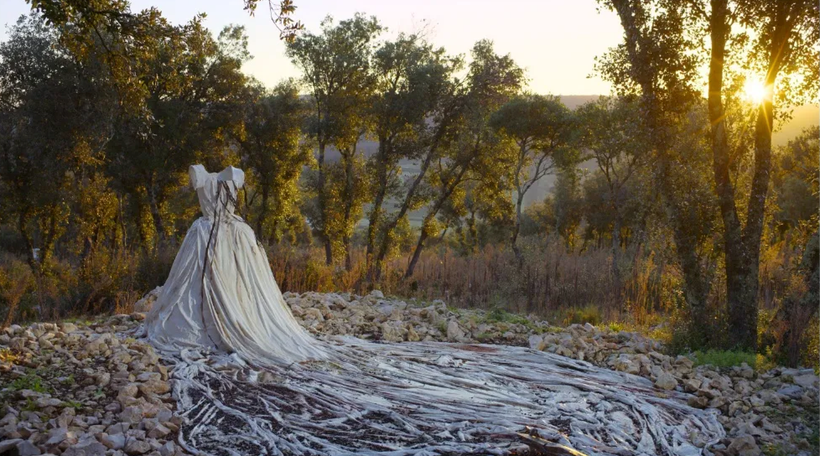Anselm (Wim Wenders, 2023) (Patreon)
Content

Covering some of the same ground of Sophie Fiennes' 2010 documentary Over Your Cities Grass Will Grow, Wenders' film wisely adopts a less instructional, more experiential approach to Anselm Kiefer's artwork. Over Your Cities mostly focused on Kiefer's studio in Barjac, France, which the artist gradually converted into a multi-tiered, tunnel-laden installation work, and that film made a solid argument that Kiefer had become a sort of Wagnerian mage, transforming both the architecture and the landscape into a sort of modern ruin, caked in mud and straw, with strategically arranged points of illumination inside a primordial darkness. Cinema was needed to provide a sense of the monumental labyrinth of Kiefer's production.
What's unique about Anselm is that Wenders uses 3D cinematography to bring the viewer much closer to Kiefer's sculptural works, and in so doing highlights the accumulated depth of even the flat works on canvas. While covering more ground than Fiennes' film, Anselm remains the more focused of the two films, since it suggests the expansiveness that Kiefer strives toward even in his most modest artworks. Following from Celan and Heidegger, Kiefer aims to produce a kind of pseudo-nature, replacing the war-scorched landscape of Germany with a deliberate simulacrum of entropy and decay. He is attempting to literally rewrite Germania as a space that bears the wounds of history while also allowing for the possibility of spiritual renewal.

To his credit, Wenders does not downplay Kiefer's direct engagement with Germany's Nazi past. But what Anselm does show quite clearly is that the artist believes Germany culture can only survive by working through the mass trauma of the Third Reich, disentangling Nazi ideology from Germanic myth. Like the filmmaker Hans-Jürgen Syberberg, Kiefer has been accused of being a reactionary. But this needs to be understood in context. The postwar "economic miracle" under Konrad Adenauer offered Germans a means to sweep fascism under the rug, to show that Germany was "normal" again. Against this delusion, Kiefer insists that prosperity cannot erase guilt.
This is why Kiefer's canvases, sculptures, environments, and massive libraries are so imposing. He burns his paintings, encases photographs in lead, or literally digs exhibition spaces out of the dirt, to produce a German universe that never recovers from the World War or the Holocaust. He makes light materials heavy, new things old, and desiccates the natural world until it is permanently stranded between death and rebirth. In many respects Kiefer is an unreconstructed Hegelian. He wants history to engulf us, offering no way out but through.

Wenders is smart to link Kiefer's work to the sifting through of postwar destruction. The new German cinema offered us the so-called Trümmerfilm, the "rubble film," in which Germans literally salvaged bricks from destroyed buildings in order to start again from zero. Some of these films, like Fassbinder's The Marriage of Maria Braun or Helma Sanders-Brahms' Germany, Pale Mother, explored the culpability of ordinary Germans, while many other such films offered Germans a compensatory sense of shared trauma ("we too suffered, not just the Jews") and even a patriotic kind of resilience.
Kiefer emerged as an artist shortly after the rise of the new German cinema. He knowingly adopts the massive scale of the cinema but offers none of the succor, no sense that we can narrate our way out of these centuries-long stories. Wenders shows us Kiefer's stage sets for nonexistent plays, thick tomes without words, and above all, the calling forth of myths that are frozen in time, incapable of providing the shared cultural heroism they promise. As Anselm shows, the Germans will never stop digging themselves out of the concrete and mud. It is an ethical obligation for the nation's spirit to remain forever demolished, for the heaps of dead cities to paradoxically comprise the new totality. The air is filled with dust, and Kiefer demands that we breathe it in.
